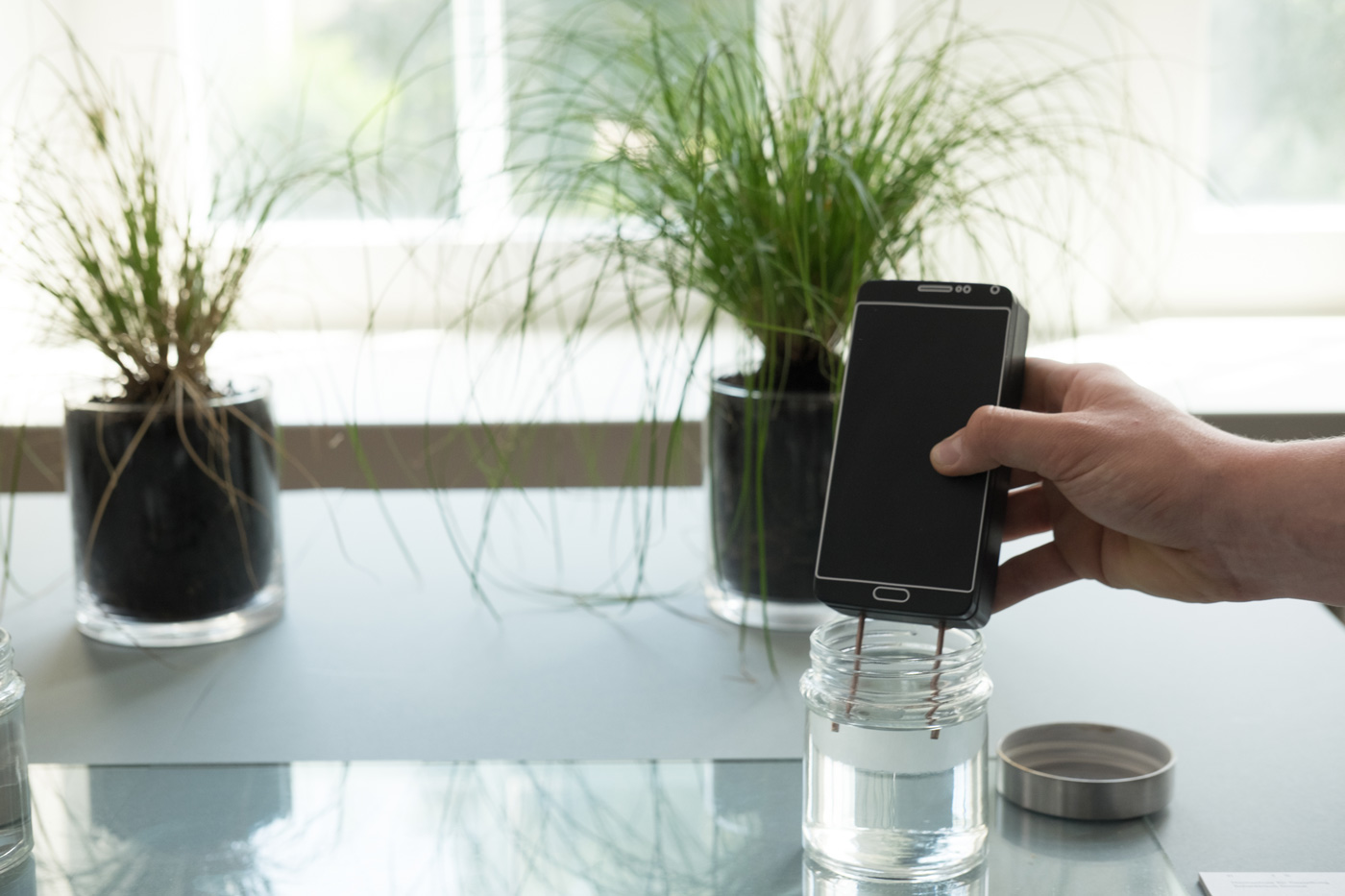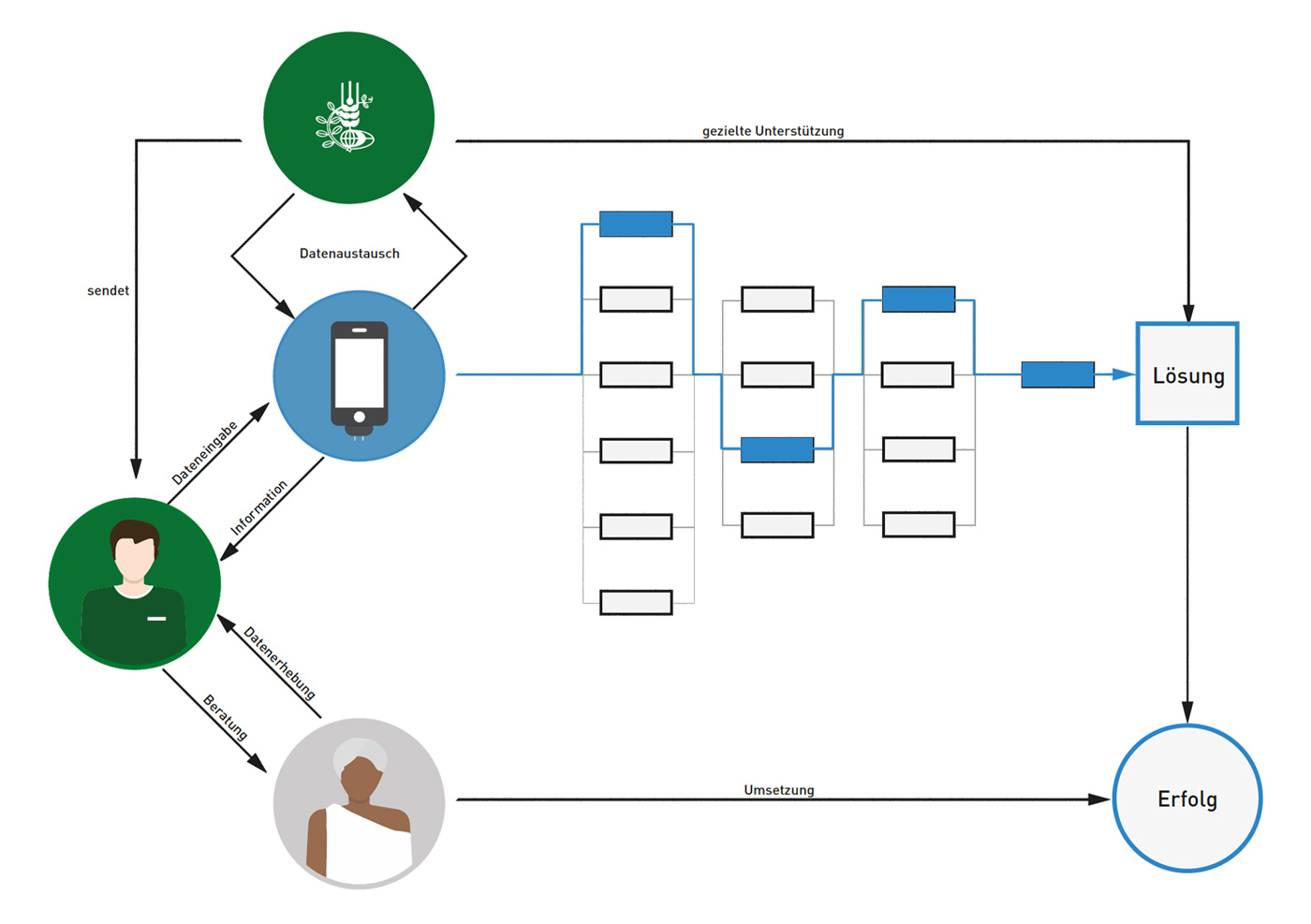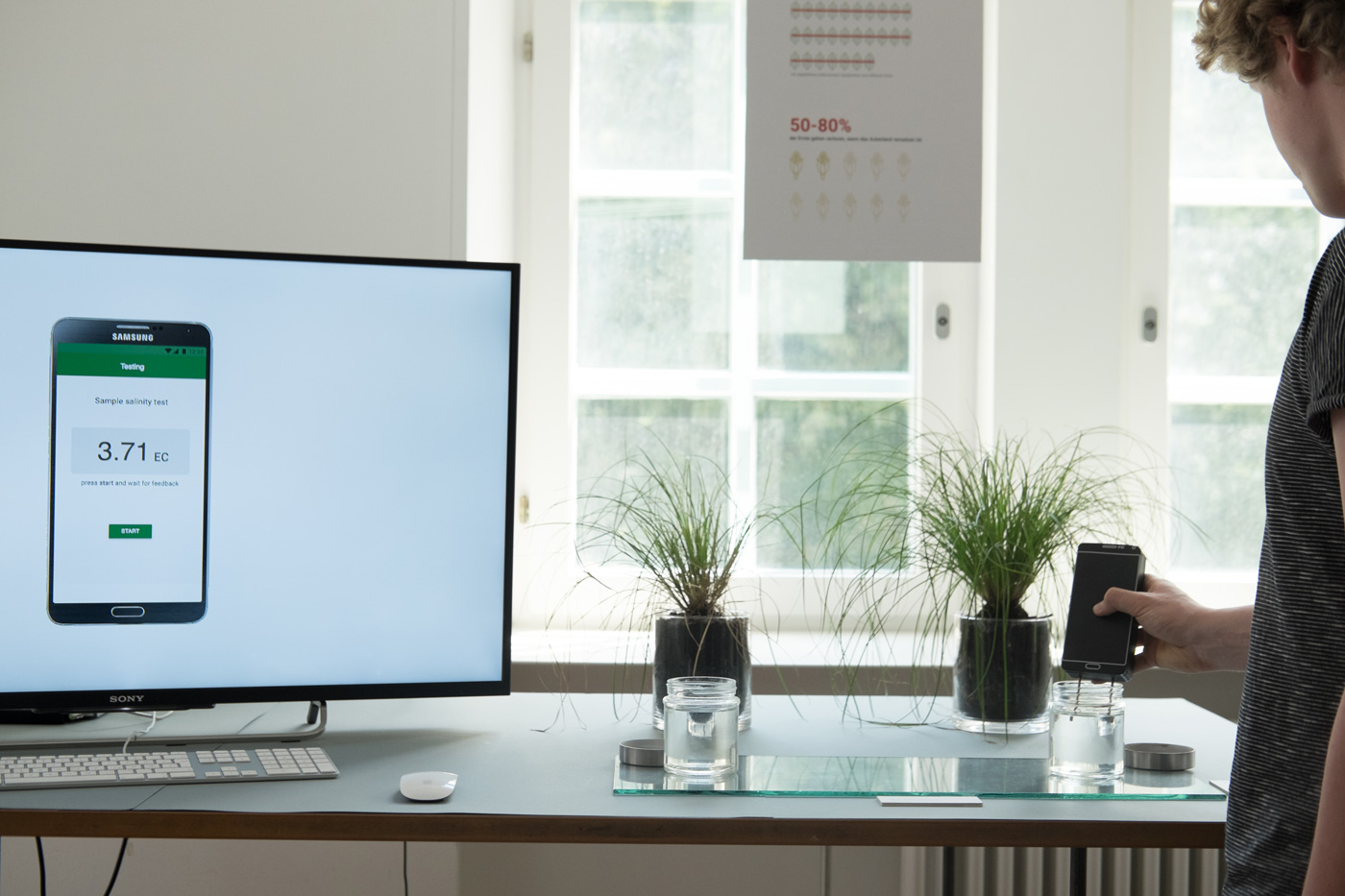Salinity report
This project is focused on providing inexpensive tools to determine soil and water salinity and enabling untrained humanitarian aid workers to competently advise farmers affected by salination on how to restore their soil in the most efficient way.
Especially in the dryer areas of our planet fertile soil is one of the most valuable resources. In developing countries the existence
of a majority of the population is directly dependent on agriculture and therefore directly dependent on fertile soil. Due to a pheno-menon called salination those fertile soils are dwindling at an alarming rate.

Salination occurs over time as farmland is artificially irrigated. Irrigation water generally contains a certain amount of dissolved salts. Some of the salt remains in the upper soil layers as the water evaporates after irrigation. Over time that leads to a buildup of salt deposits. As salt is hygroscopic it dehydrates the crop which effectively results in crop failure.
Humanitarian organizations like ICARDA are devoted to this problem. This project aims at helping those organizations with their effort.
To fight salination the affected soil is usually tested in a laboratory to find out the exact amount of salt it contains. Based on that knowledge the most efficient way of restoring the soil can be determined.
Unfortunately poor farmers in developing countries neither have the money nor the necessary infra-structure to conduct such tests.

This graphic visualizes how the system we designed to help fighting salination works. Everything starts with a humanitarian organization sending a aid worker to a affected farmer. This aid worker is equipped with a smartphone and an attachable low cost conductivity meter peripheral to measure soil and water salinity. Upon arrival at the farm the aid worker assesses the situation collects all the data necessary to determine the most effective and efficient way of restoring the soil in this individual case. This data is processed by an application on the smartphone and a respective plan is created. Based on this plan the aid worker advises the farmer.
Source: Keynote animation to show the system logic
This Decision Tree visualizes the systems fundamental logic. Said logic is based on the process of elimination. In three separate steps data is fed into the system, allowing an algorithm to narrow down the viable solutions for an individiual case.
We also build a exhibiton setup with an actual arduino based salinity measuring device which we presented at our semester exhibition and the push conference 2016 in Munich.
Methods used
Interview with a Professor of agricultural biology, user testing
Programs and languages used
Sketch, HTML, CSS, Javascript, Arduino
My role in this project
Research, conception, screendesign, prototype programming



